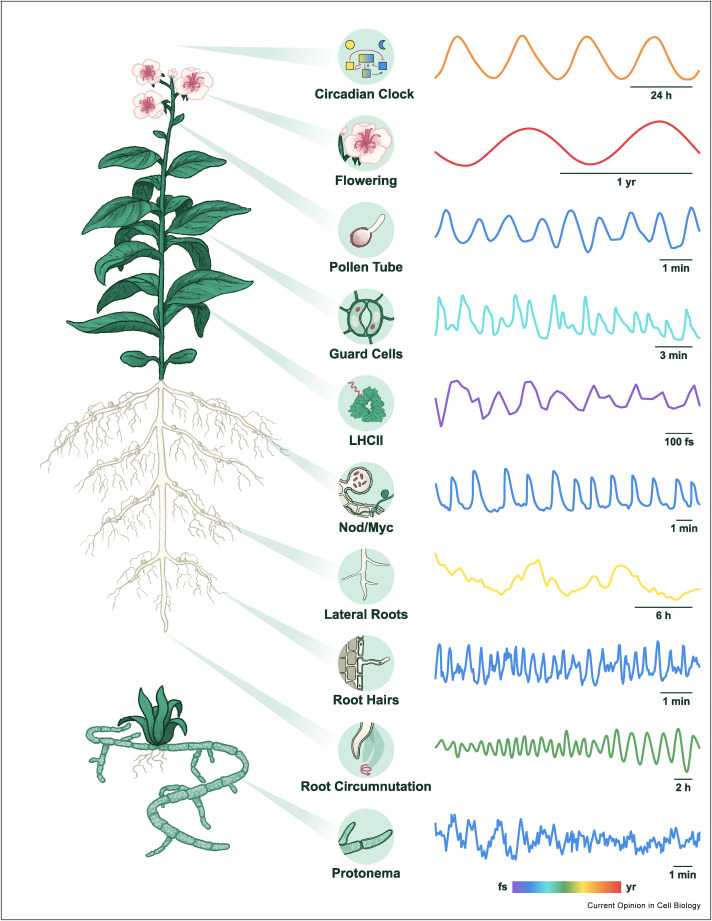Cell-to-cell communication in bacteria
Quoum Sensing

Sounds like an Input Logical Function mechanism. This is the simplest case.
Systems were discovered which regulates the temporal order of events.
All these mecsshnisms output a singla that is proportional to the number of emitters. These networks hence need to have mechanisms that conserve the amplitude of the input or else have a steady and stable linear gain across the two ends.
The other case might be to just sense a minimum quorum in the literal sense.
How would the organism benefit from quorum sensing?
- Degradation of the cell walls of the potato results results in no fitness benefits for the growth of the Pectobacterium. However, the transmission to other entities (potatoes) becomes more viable through insects like Drosophila.
Part II
- Quorum sensing enables bacteria on:
- To sense cell density — Regulate group mechanisms
- Sense and control temporal events
- Differentiate between self and non-self. Using specificity of quorum sensing signals.
Biofilms
Biofilms based communities are a primodial lifestyle.
90% of all microorganisms have a biofilm related lifestyle.
Three lifestyles:
- Planktonic: high mobility; low attachment; more homogenous.
- Biofilms: low mobility; high heterogenity within the matrix.
- Dispersal: Seeder cells; a mix of both; includes disperse matrix and aggregates without any matrix.
The three lifestyles are also genetically different, not just the phenotype.
Biofilms are 10-1000x more resistant to antimicrobial agents.
Newer insight: some biofilms can offer protection to the host : mostly in plants.
Telomerase Shortening in Cancer and Aging
TTAGGG: human telomere sequence.Cancer incidence increases with age
- Loss of mechanisms that promote homeostasis in cell regulation
- Environmental factors
Young and old is not a cellular thing, it is an oranular thing.
Senescent: The process of growing old. In biology, senescence is a process by which a cell ages and permanently stops dividing but does not die. Over time, large numbers of old (or senescent) cells can build up in tissues throughout the body. (cancer.gov)
- Senescent cells become flattened, enlarged and have increased $\beta$ -galactosidase activity.
- Increased size of nucleus and nucleoli
- Increased number of multinucleated cells.
- Increased number of lysosomes, Golgi, and cytoplasmic microfilaments.
- Short telemeres that exhibit DNA damage.
Why don’t we have circular chromosomes?
- Distinguish chromosome-ends from double strand breaks — telomers.
- It also ensures complete chromosome duplication (telomerase).
Cell-to-cell communication in cancer
- Hallmarks of multicellularity:
- Cell to cell communication
- Cell differentiation
- Plasticity
- Cell migration
- Controlled cell proliferation (cell division)
- Cohesion / Adhesion
- Sensory Capacity
- Reproduction as a single unit ?
- Canine transmissible venereal tumour (CTVT): Its genotype is the same across the canine population and the tumor is actually older than the specialtion of dogs and wolves.
- Walberg effect: Aerobic glycosides in tumor cells in the presence of oxygen.
- Every cancer therepy sort of work for Melenoma.
Disapperaing Microbiota and Modern Plagues
- How to describe and compare diversity?
- $\alpha$ diversity: How many taxa are in the sample?
- $\beta$ diversity: How many taxa are shared betwen samples?
Chronobiology: it’s not only about time!
Spatial scale: $10^-9 - 10^6m$ : 15 orders of magnitude.
Temporal scale: $10^{-15} - 10^9s$ : 24 orders of magnitude.
Endogenous rhythms:
- Fast: 1 cycle <24 hours -> Ultradian
- Slow: 1 cycle lastes 24 hours -> Circadian
- Ultra-slow: 1 cycle > 24 hours -> Infradian
Van der Pol oscillator $$ \dot x = \mu ( x - 1/x^3 - y) \ \dot y = $$
Non-stationary: Period/amplitude changes in time
- Coherent changes — e.g. frequency drift
- Erratic changes. Irregular or quasi-period oscillations
Methodological Concerns
Lomb-Scargle: https://iopscience.iop.org/article/10.3847/1538-4365/aab766
Sampling rate: at least 3 cycles
atleast 3 points per cycle before saying anything about the time function.
Read about Wavelets
Design principles of biochemical oscillators: https://www.ncbi.nlm.nih.gov/pmc/articles/PMC2796343/
In dyanmical systems, delay can give memory to the systems.
Biochemical sources of nonlinearity
- Oligomerization
- Cooperativity/allostary
- Multiscale phosphorylation
- Stochiometric inhibition
With Oscillations: Temporality does not imply causality.
Differentiate Oscillator components and Downstream. The components of the oscillator are essential for the time series generation.
Circadian rhythm: from organisms to Cells
- Stochastic switching and bet-hedging are two ways of dealing with stochastic environmental changes.
- 40% of proteins have c.a. rhythms in their transcripts. (Zhang et al 2014)
- Cyanobacteria and its circadian rhythm
- ZT in c.a. papaers is Zeitgeiber Time.
Last Class
- PRC — A phase response curve.
What makes it a clock?
- Self-sustained rhythmicity
- Transients
- Temperature compensation: $Q_{10}$.
- Antagonistic balance: TODO
